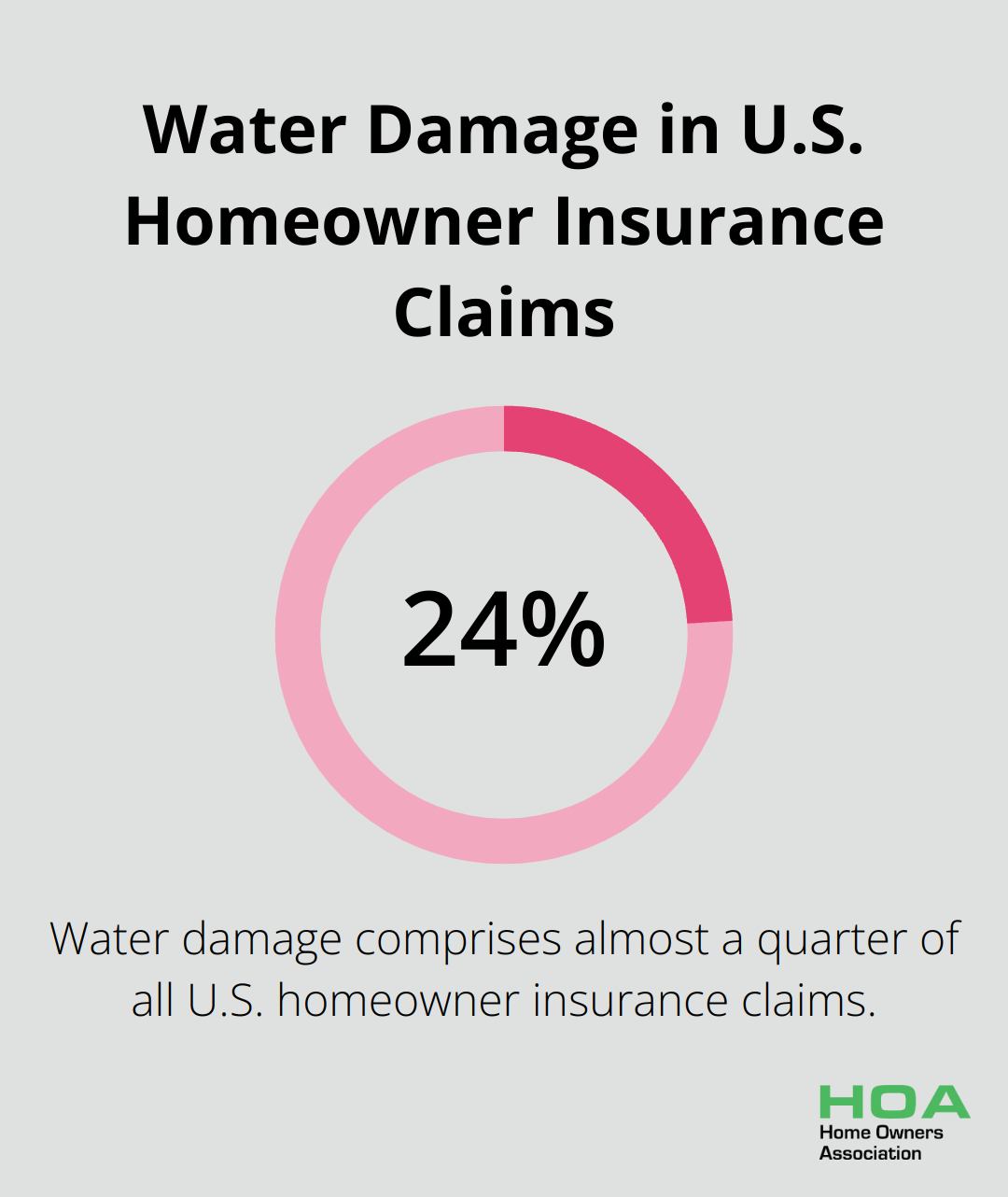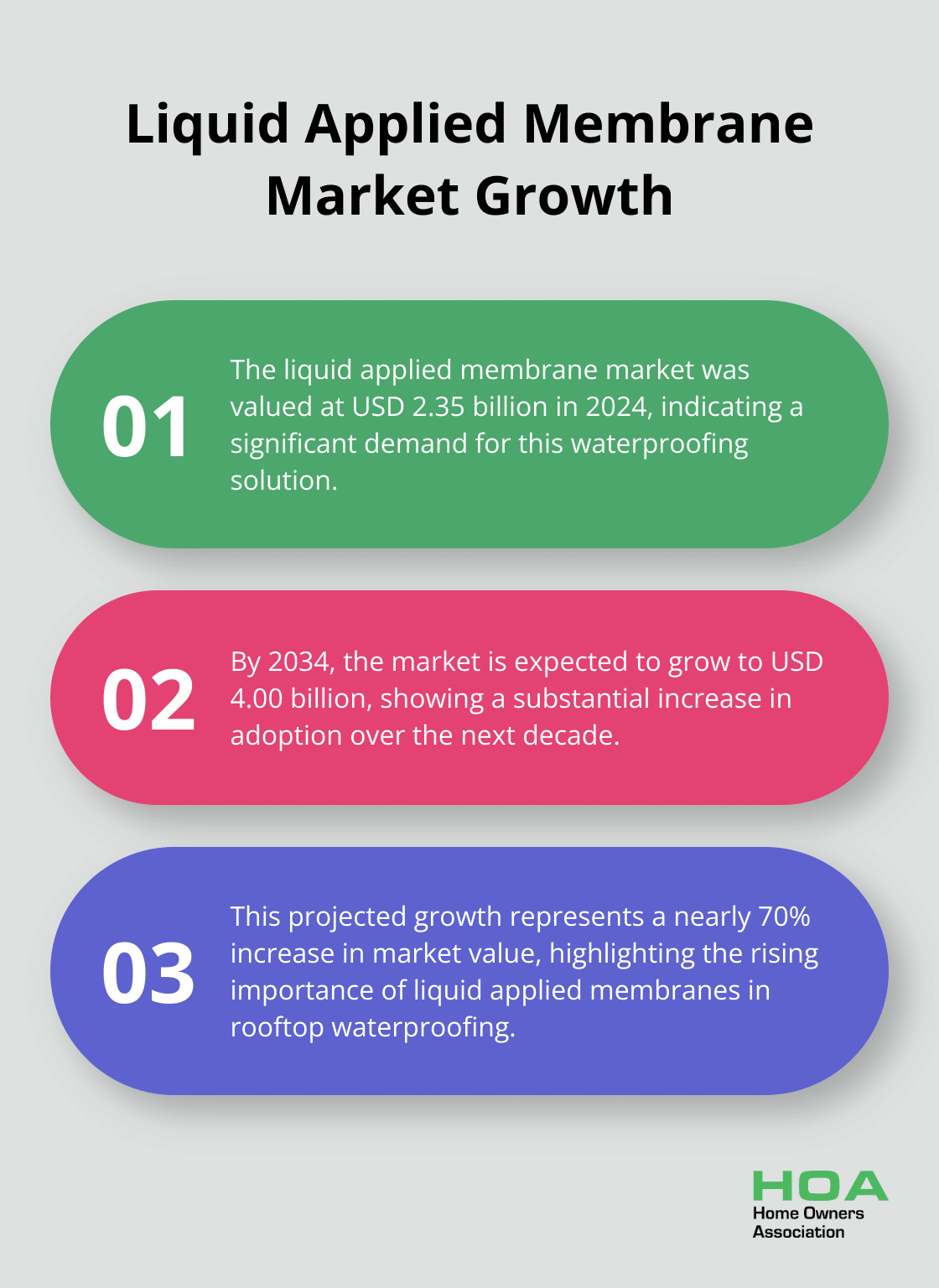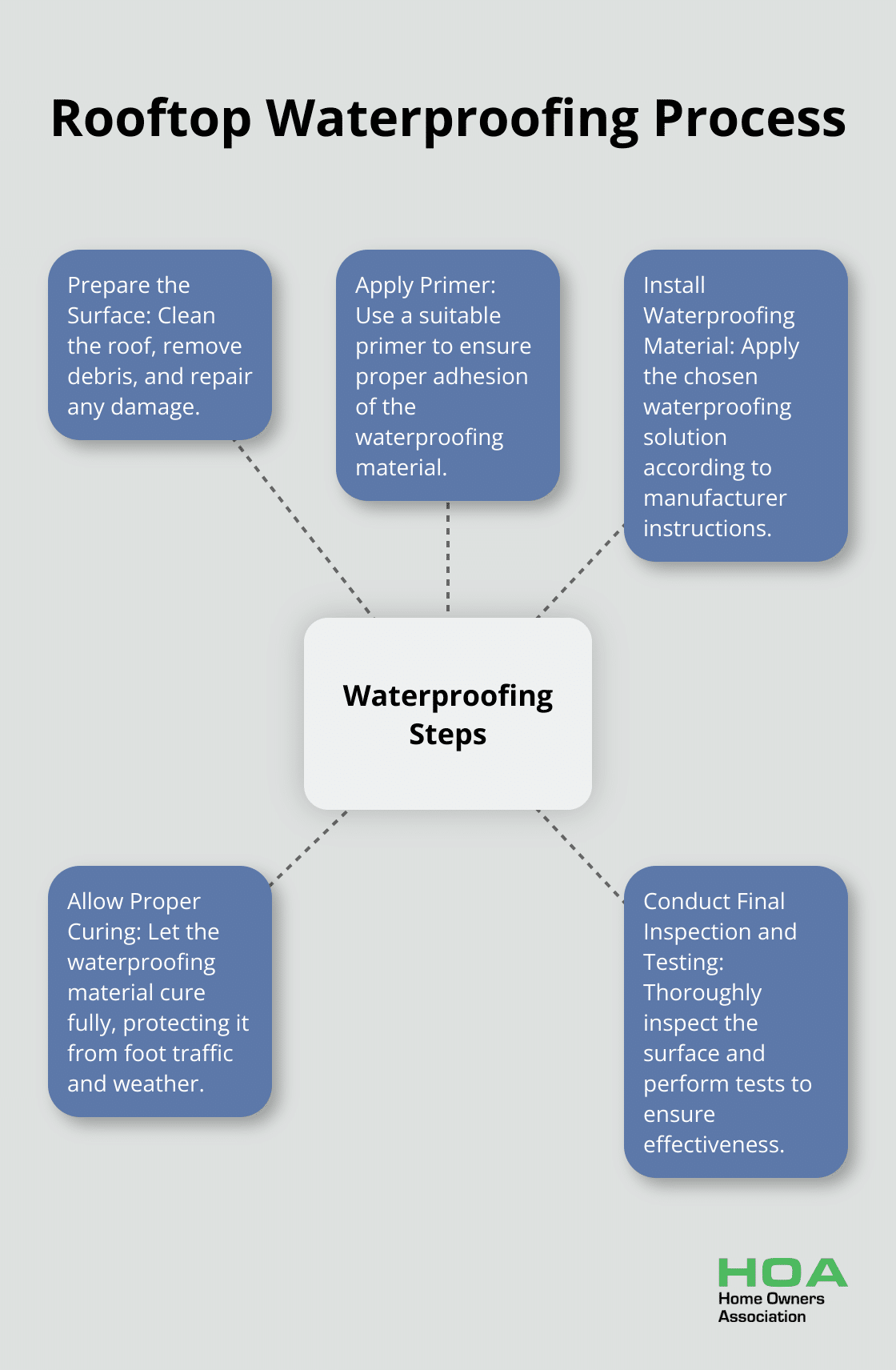
At Home Owners Association, we understand the critical role a well-maintained roof plays in protecting your home.
Waterproofing your rooftop is a vital step in safeguarding your property from water damage, extending your roof’s lifespan, and improving energy efficiency.
This guide will walk you through effective methods and steps for waterproofing your rooftop, helping you make informed decisions to keep your home dry and secure.
Why Waterproof Your Rooftop
Waterproofing your rooftop is not just a maintenance task; it’s an essential investment in your home’s longevity and your family’s comfort. A well-waterproofed roof acts as your property’s first line of defence against the elements, protecting everything beneath it from potential water damage.
Preventing Costly Water Damage
Water infiltration can cause havoc on your home’s structure. Even small leaks can result in significant issues over time, including mould growth, rotting wood, and compromised insulation. Water damage comprises almost 24% of all U.S. homeowner insurance claims. Effective rooftop waterproofing takes a proactive step to avoid these expensive repairs and potential health hazards.

Extending Your Roof’s Lifespan
A properly waterproofed roof can last significantly longer than one left unprotected. EPDM roofs can last up to 40 years or more when installed by a manufacturer-certified roofer using a fully-adhered application method. This means that investing in waterproofing now can save you thousands of dollars in premature roof replacement costs down the line.
Boosting Energy Efficiency
Waterproofing your rooftop doesn’t just keep water out; it can also help keep your energy bills down. The U.S. Department of Energy indicates that a well-sealed and insulated roof can reduce heating and cooling costs by up to 15%. Many modern waterproofing solutions (such as reflective coatings) can decrease roof temperatures by up to 30%, reducing the strain on your air conditioning system during hot summer months.
Professional Application Matters
The key to effective waterproofing lies not just in the materials used, but also in the expertise of the application. Consulting with certified professionals ensures your rooftop waterproofing is done right the first time. These experts can recommend the best waterproofing solutions for your specific roof type and climate conditions (factors that significantly impact the effectiveness of the waterproofing process).
As we move forward, let’s explore the various waterproofing methods available and how to choose the right one for your rooftop.
Selecting Your Rooftop Waterproofing Solution
Choosing the right method for waterproofing your rooftop is essential for long-term protection. The proper waterproofing solution can significantly impact roof longevity and home protection. Let’s explore the most effective options available to Australian homeowners.
Liquid Applied Membranes: Versatility and Seamless Protection
Liquid applied membranes create a seamless waterproof barrier, making them highly effective for roofs with complex shapes or numerous penetrations. The liquid applied membrane market was valued at USD 2.35 billion in 2024 and is expected to grow to USD 4.00 billion by 2034.
Application involves rolling or spraying the liquid onto the roof surface, where it cures to form a robust, flexible membrane. This method works well for retrofitting existing roofs and can be completed in a single day, which minimises disruption to your household.

Sheet Membranes: Durability for Large Areas
Sheet membranes offer excellent durability and quick installation for expansive, flat rooftops. EPDM (ethylene propylene diene terpolymer) and TPO (thermoplastic polyolefin) are two popular options in this category.
Professionals typically mechanically fasten or fully adhere sheet membranes to the roof surface. While installation requires expert knowledge, the result is a highly resistant barrier against UV radiation and extreme weather conditions.
Cementitious Waterproofing: Cost-Effective Concrete Protection
Cementitious waterproofing provides a cost-effective solution for concrete roofs. This method involves applying a mixture of cement, sand, and a waterproofing compound to create a rigid, waterproof layer. While not as flexible as other options, it suits areas with moderate climate conditions well.
The Australian Building Codes Board recommends cementitious waterproofing for its fire-resistant properties (a smart choice in bushfire-prone areas). However, proper application is critical to prevent cracking over time.
Factors to Consider When Choosing a Waterproofing Solution
Several factors influence the selection of the best waterproofing method for your rooftop:
- Roof type and slope
- Local climate conditions
- Budget constraints
- Desired lifespan of the waterproofing solution
- Building codes and regulations
The optimal waterproofing solution depends on your specific roof type, climate, and budget. A certified roofing professional can assess your unique needs and ensure optimal protection for your home. As we move forward, we’ll explore the step-by-step process of waterproofing your rooftop, regardless of the method you choose.
How to Waterproof Your Rooftop

Prepare the Surface
Start by cleaning your entire roof area. Remove all debris and loose materials. Use a power washer to clean the surface effectively (but avoid damaging the roofing material). Inspect the roof for cracks, holes, or damaged areas. Repair these issues before you apply any waterproofing material. For concrete roofs, use a patching compound to fill cracks. For metal roofs, address rust spots and apply a rust-inhibiting primer.
Apply Primer
Applying primer ensures proper adhesion of the waterproofing material. Choose a primer that matches your roofing material and waterproofing product. Use a roller or sprayer to apply the primer evenly across the entire surface. Allow it to dry completely before you move to the next step (drying times vary, so check the manufacturer’s instructions).
Install Waterproofing Material
The application method depends on your chosen waterproofing system:
For liquid membranes: Use a roller or sprayer to apply an even coat across the entire surface. Pay extra attention to corners, edges, and protrusions like vents or chimneys.
For sheet membranes: Roll out the material carefully. Avoid air bubbles or wrinkles. Overlap the edges according to specifications and use appropriate adhesive or heat-welding techniques to seal the seams.
For cementitious waterproofing: Mix the product according to instructions. Apply it with a trowel or brush. You may need multiple coats for optimal protection.
Allow Proper Curing
After application, let the waterproofing material cure fully. Curing times range from 24 hours to several days (depending on the product and weather conditions). During this time, protect the roof from foot traffic and adverse weather.
Conduct Final Inspection and Testing
Once cured, inspect the entire surface thoroughly. Look for missed spots, thin areas, or imperfections in the waterproofing layer. Address any issues immediately to ensure complete coverage.
Test the effectiveness of your waterproofing job. One method is to perform a flood test. Block the roof drains and flood the roof with water. Monitor the areas below for any signs of leakage.
If you detect leaks, mark these areas and address them promptly once the roof dries. Reapply waterproofing material as needed and test again to ensure a watertight seal.
While DIY waterproofing is possible for some homeowners, complex roofing systems or large areas often benefit from professional application. If you’re unsure about any step in the process, consult with a roofing expert. Proper waterproofing protects your home’s longevity and your peace of mind.
Final Thoughts
Waterproofing your rooftop protects your home from water damage, extends your roof’s lifespan, and improves energy efficiency. Proper surface preparation, selection of the right waterproofing method, and careful application are essential steps. Annual inspections and prompt repairs will maintain the effectiveness of your rooftop waterproofing.
Professional expertise often yields the best results for complex roofing systems or large areas. Certified roofing experts ensure correct application, potentially saving time and money in the long run. They can also provide valuable advice on the most suitable waterproofing solutions for your specific roof type and climate conditions.
At Home Owners Association, we support Melbourne homeowners with their property maintenance and improvement projects. Our members receive trade pricing, expert advice, and resources for successful home projects. We stand ready to assist you with your rooftop waterproofing or any other home improvement task.





